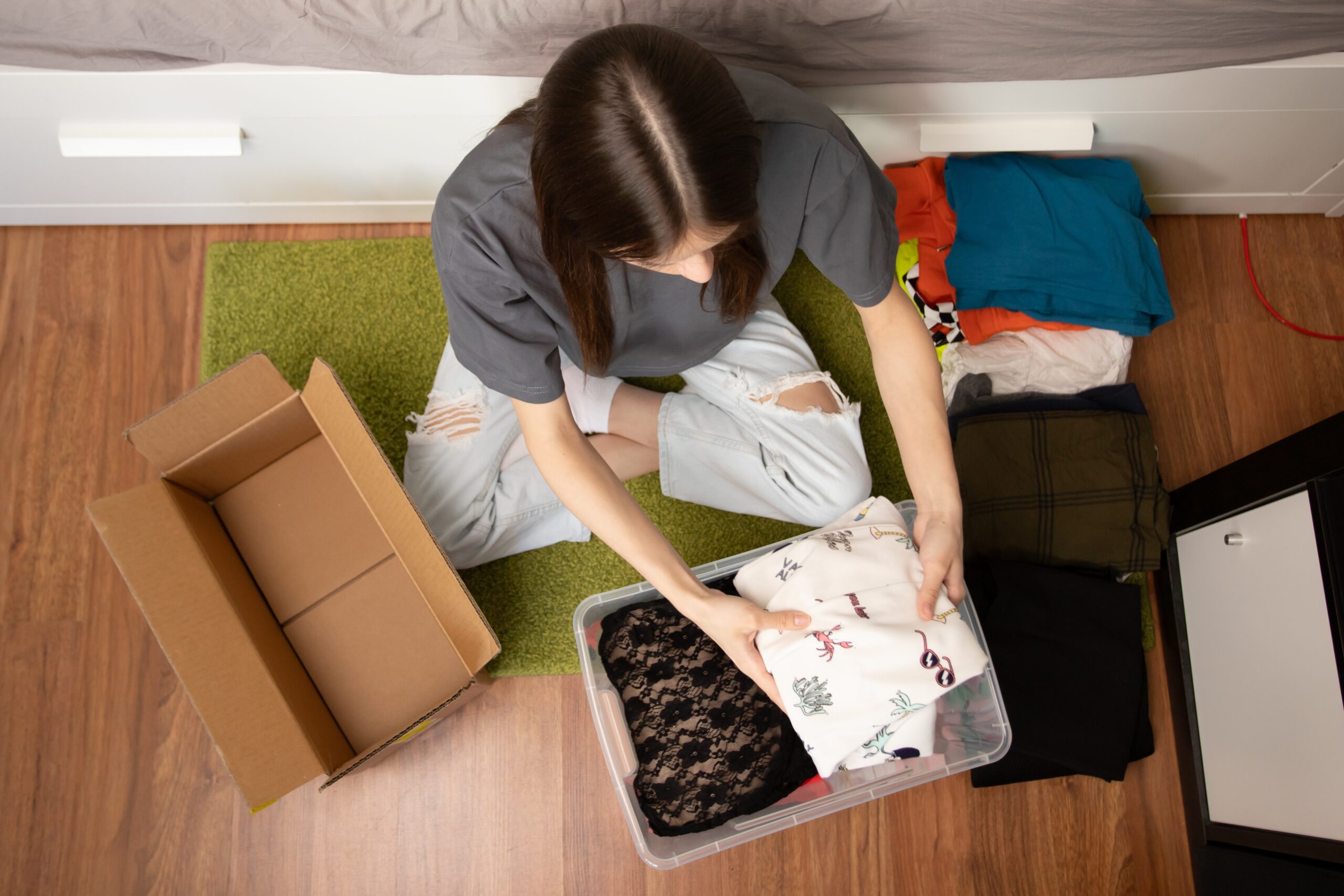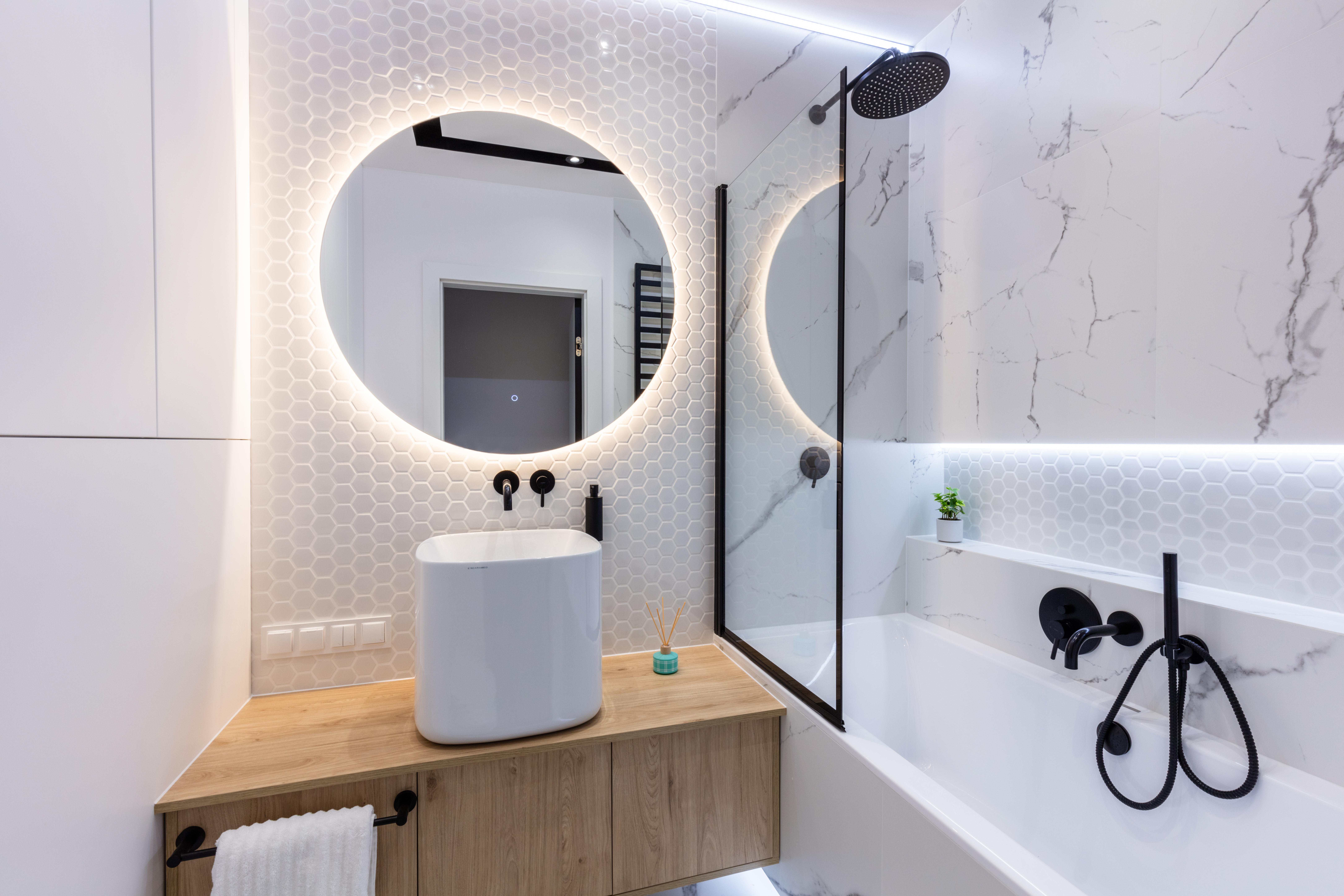Article takeaways
- Make a plan in advance. Create a detailed apartment move-in checklist with timelines for each phase of your move. This will reduce stress, help you plan and keep you on track before, during and after your move.
- Pack strategically. Remember that what you pack now, you will have to unpack and organize later. Prepare a well-labeled packing system that ensures your most important apartment essentials are readily and immediately accessible on your first day in your new home.
- Use self-storage. Temporary storage can help keep your one-day move controlled and manageable. Move the biggest and most important items first, and rent a self-storage unit to house smaller and less pressing belongings till the basics are in place in your new home.
- Good communication is key. Confirm the details of your move with all relevant parties 48 hours before moving day. Check in with landlords, movers, and utility companies to make sure everything is on track, and make sure you keep important contact information on your person throughout your move.
The key to a stress-free move to a new rental home is planning, organization, and more planning.
Moving homes can be an anxiety-inducing task filled with chaos and uncertainties: Did you forget anything? Did you lose or misplace something? Should you rent a storage unit?
This comprehensive guide is chock full of key tips for moving into a new place that are designed to help you do so as seamlessly as possible.
We’ll walk you through the all-important pre-move checklist basics, from pre-planning to moving day preparation, and help you avoid common mistakes.
If you’re looking for some ideas for moving-day essentials and tips for how to prepare for a move into a new home without all the fuss, read on.
Moving out of an apartment? We’ve got a checklist for that, too.
Set Yourself Up for Success in Advance: Build a Comprehensive Two-Week Apartment Move-In Checklist

A successful move starts well before you’ve packed your first box, because a successful move first needs a good, well-thought-out plan. Setting aside enough time helps you prepare for a move by giving you ample time to identify and address any unexpected issues without panic, well before moving day. A sound plan will give you peace of mind as moving day approaches.
Create Your Move-In Day Timeline
At least two weeks before your move date, create a detailed apartment move-in checklist that includes preparation for decluttering, selecting and scheduling movers, contacting utility companies, and finalizing logistics. This may look more like a calendar than a simple checklist, but you want to account for every eventuality to ensure a smooth move.
| Timeline | Critical Tasks |
|---|---|
| 2 Weeks Before Moving | • Research and book a moving company • Create detailed inventory • Start the decluttering process • Order packing supplies |
| 10 Days Before Moving | • Contact utility companies • Submit address change forms • Confirm moving truck/company details • Reserve storage unit if needed |
| 1 Week Before Moving | • Confirm all arrangements • Pack non-essentials • Prepare a survival kit or Open First Box • Complete final paperwork |
| 3 Days Before Moving | • Pack room by room • Confirm weather forecast • Charge all devices • Prepare first-day essentials |
| Moving Day | • Complete final walkthrough • Direct movers • Document the new apartment or home’s condition • Set up immediate necessities |
Create a moving day timeline that assigns critical day-of tasks to hourly time blocks. This should include everything from last-minute packing, appliance checks, a final walkthrough of your old unit, and your movers’ arrival times at both your former and new home.
Don’t forget to plan for contingencies and unexpected delays, such as late arrivals or bad weather. Thinking through the unexpected and giving yourself enough time to prepare a plan B will save you headaches and stress if something goes wrong.
Coordinate with Your Landlord
At least one week before your move, contact your new landlord to confirm your move-in date, time and building access details. Clarify the procedure for picking up your keys, garage access and any rules and requirements about vehicle and moving truck parking. Are there designated move-in hours? Do you need to reserve a service elevator or specific parking spaces for your moving vehicles? Is any specific insurance required?
If possible, get these details in writing to ensure all parties are on the same page. Clear communication is essential to ensure everything and everyone is ready and prepared on move day.
Storage Solutions for Smooth Transitions
If there is overlap between your old and new lease dates, temporary storage provides a safe location to house your belongings during the transition, and lets you move at your own pace without having to complete everything in a single day.
Choose a climate-controlled unit if you will be storing goods during seasons with extreme temperatures, or if you need to protect sensitive items from humidity and temperature fluctuations. Climate-controlled units are ideal for electronics, artwork and important documents.
Consider a unit with 24-hour access. These units work well for renters who are downsizing to smaller apartments and have not yet decided what to do with some of their things, or those who want to prioritize organization by moving in their apartment essentials first, then gradually phase in the smaller items. The flexibility of a 24/7 access unit allows you to design your move on a timetable that best suits your needs.
One Week Before Moving: Last-Minute Considerations and Tips for Moving into a New Apartment

The week before your moving day is a critical time to make any last-minute arrangements, confirm details, and adjust your schedule for potential weather changes or delays.
Confirm All Moving Day Details
At least one week before moving, ensure that all your apartment essentials are in good order for moving day. Start by reviewing your moving transportation details. Double-check with your moving company or truck rental to confirm your reservation and verify arrival times, locations, and estimated costs.
Next, confirm that everything you need for your new apartment is in good order. Reach out to your utility company to make sure connections for gas, water, internet, and cable are scheduled correctly and will be active when you arrive. Check in with your new landlord to confirm your move-in date, and validate any parking requirements and service elevator reservations.
Pack Strategically for Easy Unpacking
Prepare a well-labeled packing system with boxes and bins color-coded by room, to make it obvious at a glance which boxes go where in your new apartment as you unload them. Placing boxes in their corresponding rooms as you move into your new home will help make unpacking uncomplicated later–no sorting through heavy, stacked boxes to locate and then relocate relevant boxes to their respective rooms.
You’ll also want to have ready access to critical items you’ll need immediately, so set aside one box or bin you plan to keep with you at all times, and label it “First Day Essentials.” This box should contain your valuables, lease agreements, insurance papers, medical records, identification documents, keys, and financial information.
Prepare Your Storage Unit
If you’ve rented a self-storage unit to assist with your move, the week before your move is the best time to organize your unit for maximum efficiency.
To help keep track of everything in your unit, consider:
- Creating a detailed inventory list of photos of items stored and their specific locations within your unit
- Leaving pathways and arranging items within your unit to ensure important move-in day necessities are within easy reach
Handle Last-Minute Utilities
If you haven’t done so already, confirm the scheduled dates and times for internet and cable installation at least a week before moving day to allow for supplier lead times.
Moving is hard work that will likely leave you hungry and tired at the end of the day, so you may also want to research grocery delivery in your new area and schedule an order to arrive on your move-in date.
And finally, make sure you have any emergency contact information on hand for moving day. This list should contain contact details for your new and old landlords, utility providers, moving company, and other people important to you.
These get-ready tips for moving into a new apartment will help ensure your most important apartment essentials are readily and immediately accessible, and will make your first days in your new home much more comfortable.
Open First Box: Keep the Basics Handy

Your moving day is not complete till you’ve created a survival kit that includes all your new apartment essentials.
Your kit should include the basics you’ll need for personal care, communications, home cleaning supplies and a toolkit for furniture and small fixes.
Keep this kit with you throughout your move instead of packing it into the truck, so you have these things handy when you need them during your move.
| Category | Essential Items |
|---|---|
| Personal Care |
• Toiletries and medications • Change of clothes • Comfortable and work shoes • Snacks and water • First aid kit |
| Technology |
• Phone chargers and portable batteries • Important contact numbers • Camera or phone for documentation • Extension cords |
| Tools |
• Screwdrivers (Phillips and flathead) • Hammer and adjustable wrench • Box cutter and tape measure • Allen wrenches • Fresh batteries and flashlight |
| Cleaning |
• All-purpose cleaner • Paper towels and trash bags • Disinfectant wipes • Basic broom and mop |
Personal Care and Comfort Items
Toiletries and medications are critical items you’ll want to have on hand for your first day, so pack those in a small toiletry bag the night before your trip. Your carry bag should also include a change of clothes, comfortable shoes, and any workwear you may need to change into for heavy-duty moving tasks. Don’t forget your snack pack, water, and a first aid kit.
Technology and Communication
Your communication devices are critical to a successful move, so make sure your devices are fully charged and have phone chargers and portable batteries at the ready throughout your move.
Make a list of important contact numbers and alternate contact information for your landlord, property manager, movers, and anyone else involved with your move. You’ll have peace of mind knowing you have several ways to contact all involved parties should issues arise.
Don’t forget a camera for documenting your apartment walkthroughs and any important papers. Your phone or device is fine, or you can pick up an inexpensive disposable camera at most drugstores.
Tools and Cleaning Supplies
Pack a basic toolkit for quick fixes and disassemblies. At a minimum, your toolkit should include screwdrivers, a hammer, a box cutter, a tape measure, Allen wrenches, and an adjustable wrench. Include fresh batteries for electronic devices, extension cords for powering tools and devices, and a flashlight.
Cleaning supplies are a must when moving into a new apartment. Pack an all-purpose cleaner, paper towels, trash bags, and disinfectant wipes for quick cleanups in your place before you start placing furniture. A simple broom and mop will also come in handy on your first day.
What Not to Do on Moving Day: Stay on Track with These Time-Saving Tips

Moving days are notoriously prone to errors, mistakes, and miscommunication, due to the sheer volume of responsibilities and things to coordinate beforehand. This is why having a thorough apartment move-in checklist that covers all your apartment essentials is crucial to a successful, low-stress move-in day.
Below are a few tips for moving into a new apartment that can help you avoid some common pitfalls:
Not having a clear plan or timeline
Among the most valuable tips for moving into a new apartment is this: Never underestimate the power of a clear plan and a thorough apartment move-in checklist.
Failing to communicate regularly with all parties
Inconsistent communication with your landlord and movers during your move may leave them confused or unsure about critical details, which can lead to delays and misplaced essentials.
Check in regularly with all parties on moving day to avoid these conflicts and keep everyone on the same page throughout the move.
Packing essential items too early
Because your essentials are all items you use daily or will need within a week before your move, you don’t want to pack up these things too early.
Jumping the gun on packing medications or important moving-day documents could leave you without items you need most in the days and weeks leading up to your move, so plan to pack essentials the night before or the morning of your move to avoid frustrations.
Not documenting the property condition
The return of your security deposit depends on the condition of your apartment at the time you leave. Poorly documenting the state of things when you move in and again when you move out could leave you on the hook for things you did not damage during your time in the home.
This is easily avoided with good record keeping, and photos are your friends. Walk through your old apartment and take pictures of the condition of each room, and do the same at your new apartment. This provides proof of the status of the dwelling before and after your time there, and can help protect you should any property damage disputes or conflicts arise after you move out.
Underestimating time requirements
Make sure you carefully estimate your timeline and build in buffer time for unexpected delays.
Forgetting to eat and stay hydrated
Don’t forget to prioritize your own well-being. Moving is hard work that burns a lot of energy, and with so much on your plate, it is common to lose track of time and skip meals. As you create your apartment move-in checklist, include time for refreshment and meal breaks for everyone involved in your move. Staying hydrated and well-fueled will help keep exhaustion, poor decision-making, and bad moods at bay.
Avoiding scams
Unfortunately, not all moving companies are what they appear to be. Be aware of common moving scams like hidden fees, bait and switch pricing, and phantom weight charges above and beyond what your goods actually weigh. These can ruin your move and your wallet if not spotted straight away.
While these unscrupulous practices can be hard to spot, there are ways you can protect yourself:
- Verify all licenses and insurance
- Get everything in writing
- Avoid paying in cash to create a paper trail
- Take a thorough inventory of the goods you are moving
- Ask to be present for any weighing of items
Your instincts don’t lie, so if something feels off, listen to your gut. There are a plethora of moving companies out there, and your best bet is those with solid Better Business Bureau scores. Look for companies that are well-established and highly rated, with transparent policies and pricing.
Ready for Moving Day? SelfStorage Can Help You Take the Next Step
With proper planning and this comprehensive pre-move checklist, you’ll be well-prepared for a successful move. Remember, the key to reducing stress is preparation – the more you plan, the smoother your moving day will be.
If you’re looking to rent a storage unit to make moving preparations and your post-move settling-in phase easier, SelfStorage.com will help you find, compare, and reserve the best unit for your needs in minutes.






